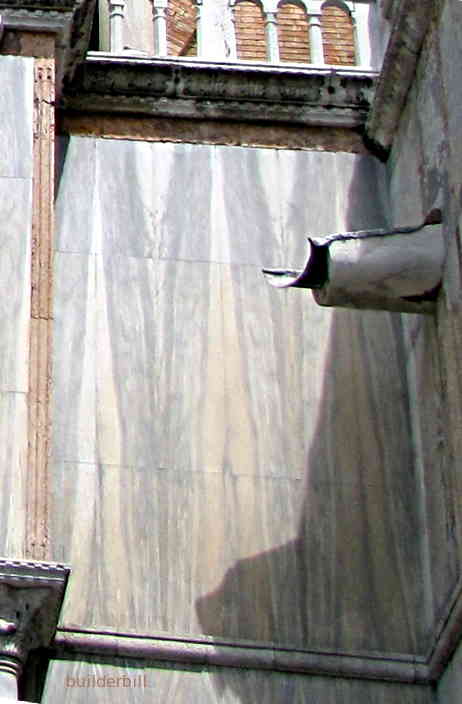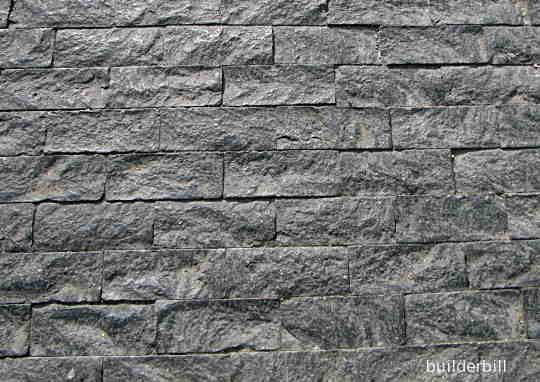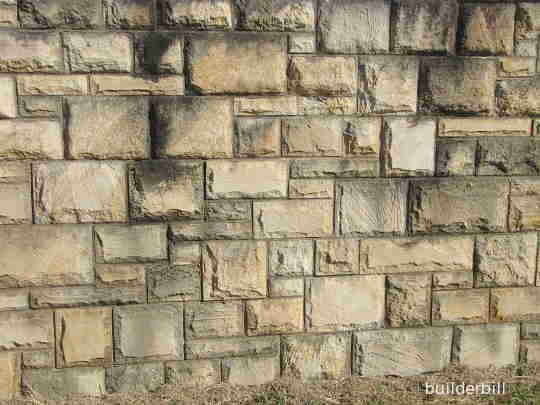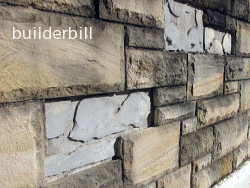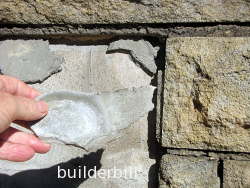 |
|||||||||||||
Graphical Construction Glossary >> masonry. >> stonework >> Veneer Masonry
It would be fair the say that the largest amount of stonework seen today in the developed countries is face veneer masonry work. Load bearing stone masonry walls are a thing of the past in general building construction. They cannot compete with reinforced concrete. So the modern trend is to use thin veneer facings or cladding. That does not mean that it is a new technique by any means. The master masons and stone cutters of Renaissance Italy excelled in making stone veneers centuries ago. Above is close up photograph of the one shown on the previous page of part of the facade of the Basilica San Marco in Venice.. In buildings like this, no expense was spared in the quest for a decorative and opulent look. In this case fine solid marble columns were polished and brought to a high degree of finish. Similar marble and other decorative stonework in the form of veneers were fixed to the face of the structural or back up walls.
Not a perfect photograph, showing age staining to the surface and an ancient and ugly lead box gutter outlet showing, but it illustrates exactly the next definition. Fine cabinetmaking has long used the process of veneering timber and they have many types of cuts to provide interesting and beautiful effects. In a similar way so do stone masons and manufacturers of modern thin stone veneer masonry. The technique shown here is called book matching or book leaf matching. The slab is sawn and alternate faces are polished and fixed in pairs to give this effect of mirror images. Normally this technique is used either horizontally (as shown here) and sometimes vertically. The area of the photograph is approximately four metres tall so the slab of marble that they came from was significant.
The old marble facing above is a bit over the top for modern tastes and in a modern building it would be replaced by on of the many man made composite (pseudo) stone materials or some really nice natural stone veneers. There is of course a large modern industry in quarrying and making natural stone veneers brought on by new cutting shaping and polishing machines In the same way that we are now getting engineered laminated timber beams that are made out of small sections of material, so the stone supply companies are making use of small sections of stone that a few years ago would have been thrown away as waste. The advances in the machinery make it possible to cheaply use very small sections. The wall courses above are about 65mm high.
This wall is (or at least was) a feature wall to the entrance to a small private subdivision of houses and apartments. There is no doubt that the looks of natural stone give a rich and appealing look and when this wall was new about seven years ago this one and the others around would have helped to sell the properties. The actual backing wall is plain old 200 series reinforced cement blockwork and the stone veneer is laid to the face of the blockwork and bedded to it in much the same way that a tiler fixes wall tiles. The guys that fixed this cladding stone had a less than perfect idea of how to go about it though. To my way of thinking when you make a feature of something it had better be right. The idea is to draw attention to it. In this case it is drawing attention for the wrong reasons.
If you didn't find exactly what you are looking for try this
search tool that will search the site and the web. "What can be added to the happiness of a man who is in health, out of debt, and has a clear conscience? "When we build, let us think that we build for ever."John Ruskin 1819-1900 |
Hire Equipment  Furniture Fittings - Architectural Hardware - Electronic Locking Systems - Technical Hardware BuilderBill sponsorship Glossary Pages.Roof Glossary and Roofing Formwork Glossary and other tempory work. Hand Tools Glossary Power Tools Glossary Asbestos Glossary Woodwork Glossary Stair Glossary Concrete Glossary Masonry Glossary doors Glossary BuilderBill Books Building Maths  Stair Design  Asbestos Book |
||||||||||||
|
|
|||||||||||||
| **glossary-footer.shtml*** | |||||||||||||

